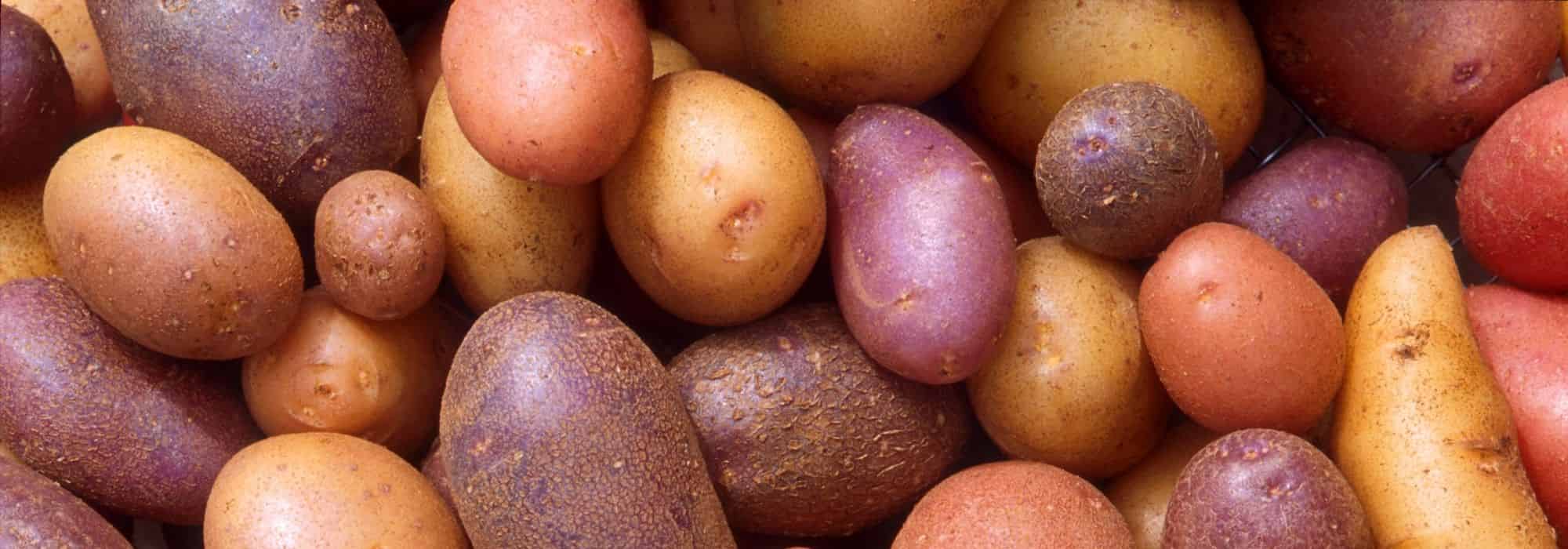
Growing new potatoes
Our tips to choose, plant, and harvest
Contents
New potatoes, also known as “early potatoes”, are among the first plantings and harvests of the year. These small-sized potatoes are highly valued in cooking for their soft, tasty, and slightly sweet flesh. Their thin skins do not require peeling and can be enjoyed without any hassle. Follow our guide to successfully grow new potatoes, from choosing varieties to planting and harvesting.

What is a new potato?
New potatoes, or ‘early’ varieties, are early or semi-early varieties harvested 60 to 90 days after planting. Unlike stored potatoes, which are generally harvested at ripeness, around 120 to 150 days after being planted.
The new potato is small in size. Its soft flesh is highly valued in cooking for its slightly sweet flavour. Its thin skin does not need to be peeled, but should only be scrubbed with a brush under a stream of water before cooking. It can be enjoyed baked, steamed, or simply sautéed.
Read also
Diseases and pests of potatoesWhich variety of potato should you choose?
Some potatoes are particularly suited for a so-called “early” cultivation, especially early and semi-early varieties. Here are some of the most appreciated for obtaining new potatoes:
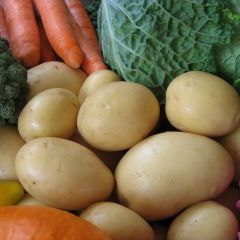
Potatoes Agata
- Height at maturity 60 cm
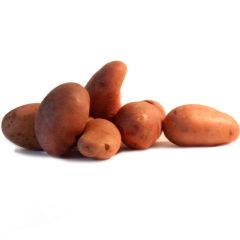
Organic Potatoes Jeannette
- Height at maturity 60 cm
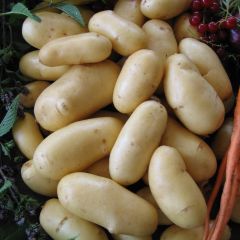
Solanum tuberosum 'Belle de Fontenay'
- Height at maturity 60 cm
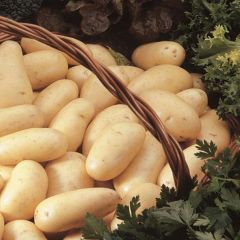
Solanum tuberosum 'Amandine'
- Height at maturity 60 cm

Organic Potatoes Charlotte
- Height at maturity 60 cm

Potatoes Resy
- Height at maturity 60 cm
Discover other Seed potatoes
View all →Available in 0 sizes
Available in 1 sizes
Available in 0 sizes
Available in 2 sizes
Available in 1 sizes
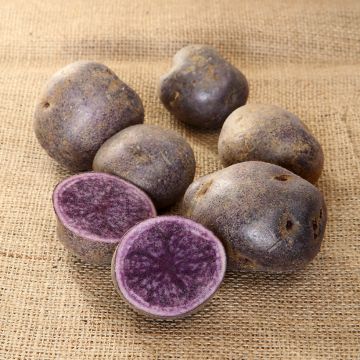
Available in 1 sizes
Available in 3 sizes
Available in 1 sizes
Available in 1 sizes
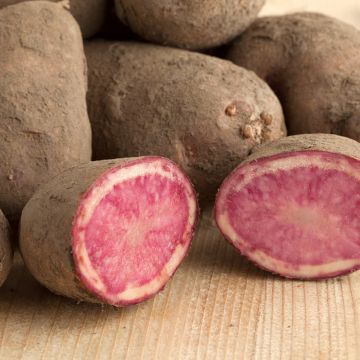
Available in 1 sizes
When to plant new potatoes?
Potato tubers are planted in open ground, outside of frost periods, from March to May depending on the regions and climate. They require soil at least 10°C and are sensitive to frost. To advance the planting and harvesting period, you can also grow them in a greenhouse from the end of February, always considering your climate. You can also set up a growth tunnel to protect your young plants from potential late frosts.
Note: remember to prepare the germination of your tubers one month before planting.
Read also
Growing Potatoes on GrassHow to plant new potatoes?
Before planting:
- The germination of potatoes is an important, if not essential, step that will allow you to achieve a better and faster harvest. One month before planting, place your tubercles in a crate in a well-ventilated, cool, and bright room, but not in direct sunlight and away from frost. The shoots will appear on the tubercles before planting.
- Prepare your soil by loosening it with a broadfork. Feel free to enrich it with well-matured compost. From experience, loose and well-worked soil yields better results.
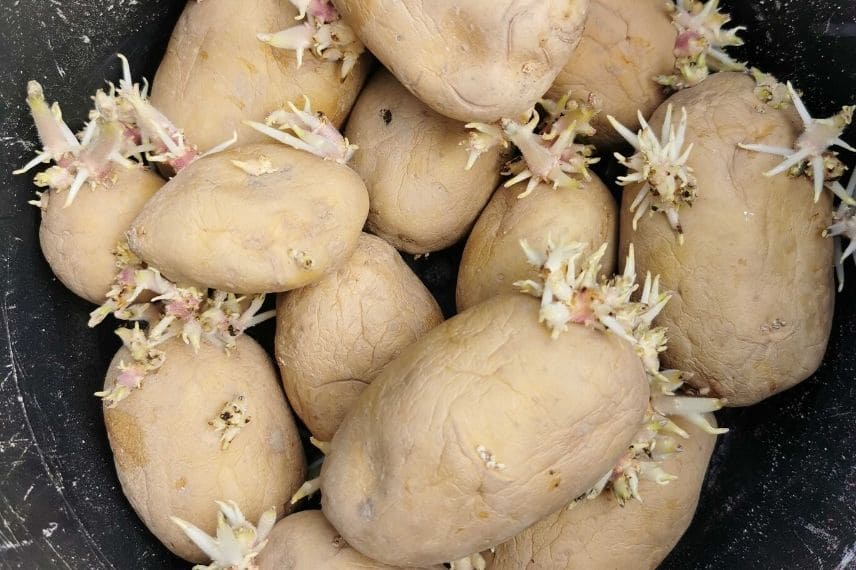
Sprouted potatoes
Where to plant potatoes?
Potatoes thrive in rich, deep soil. Choose a sunny or partially shaded location. Be sure to respect crop rotation, particularly to avoid the spread of diseases like blight. Avoid planting your plants in the same spot year after year. Similarly, do not plant them where you had tomatoes last year, as the tomatoes will have absorbed some essential nutrients for the potatoes.
How to plant?
There are mainly 2 methods of cultivation:
1) Traditional mound cultivation
- In well-loosened soil, use a hoe or a cultivator to make furrows 10 cm deep and spaced 50 cm apart.
- Place a potato tubercle every 30 to 40 cm.
- Cover gently with soil without compacting too much.
- Water if there is no rain.
- After fifteen days, mound your plants by bringing soil with a cultivator or a rake. Repeat this operation twice during the growing season.
→ Find our tips on when and how to mound potatoes?
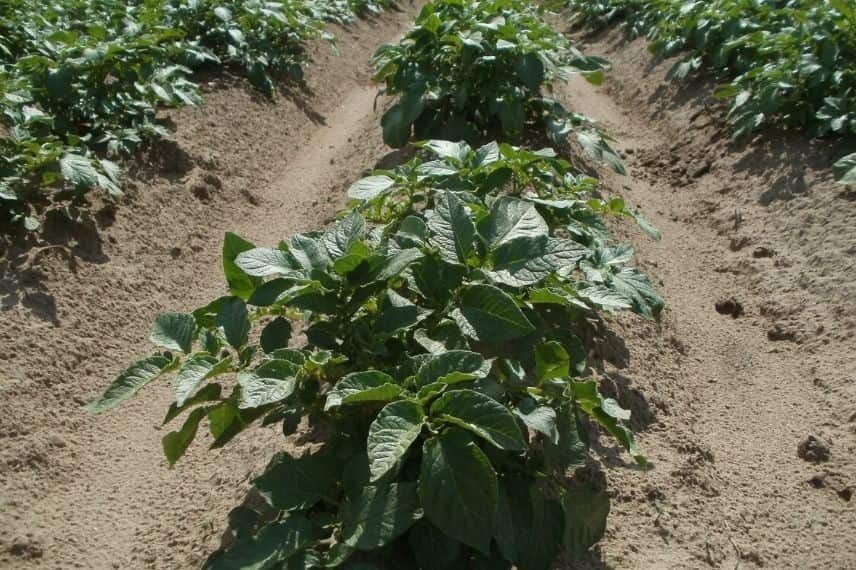
2) Mulch cultivation
- Place your tubercles directly on loosened soil.
- Add a bit of garden soil enriched with compost on top of the tubercles.
- Cover the potatoes with a thick layer of mulch (straw, dry clippings, hay, leaves, etc.).
- Water if there is no rain.
- Add more mulch as they grow.
→ Also discover how to grow potatoes on grass and our video on growing potatoes under mulch.
Harvesting and storing new potatoes
When to harvest new potatoes?
New potatoes are harvested between 60 to 90 days after planting. For planting in open ground, harvest carefully with a fork to avoid damaging the tubercles. You can also simply put on your gloves and harvest by hand when the crop is under mulch. Remember to stagger your plantings to space out the harvests. You can also plant early varieties, some semi-early, and late potatoes to always have some available in the vegetable garden.
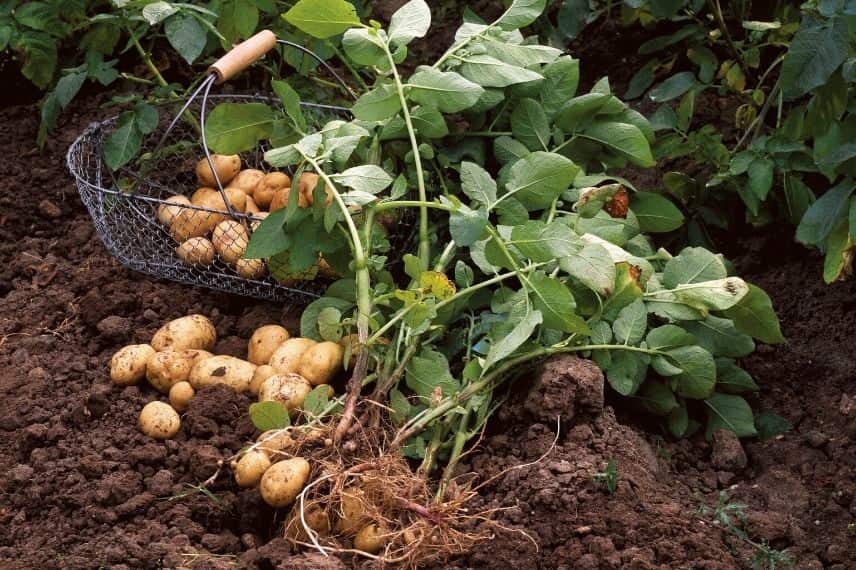
How to store new potatoes?
Unlike storage potatoes, new potatoes only keep for 3 to 5 days in a dry place or in the vegetable drawer of the refrigerator after harvesting. Indeed, their very thin and fragile skins do not allow for long-term storage. To address this small issue, we recommend harvesting your potatoes as needed.
For further reading
- Discover all our varieties of seed potatoes
- Discover everything you need to know about potatoes: planting, cultivation, storage
- Read our article to help you choose your seed potatoes wisely.
- Subscribe!
- Contents
































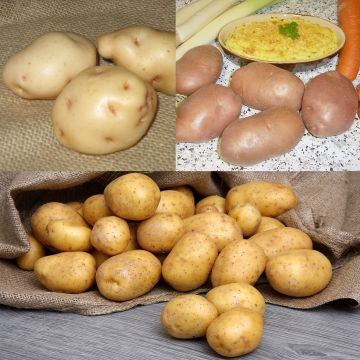
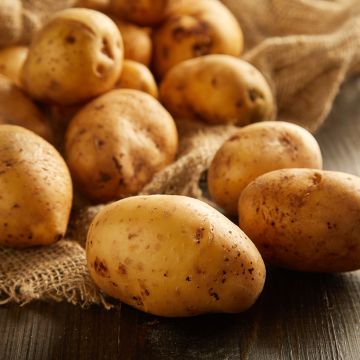

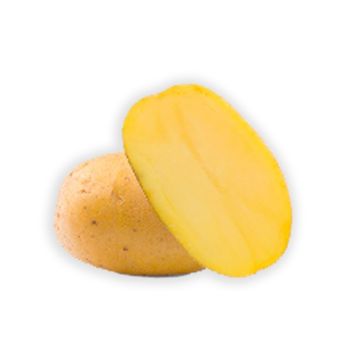
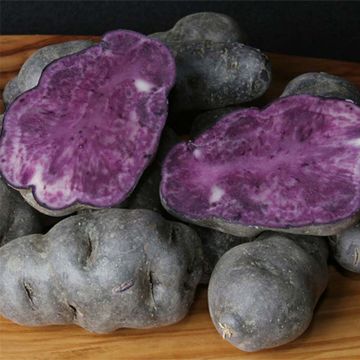



Comments